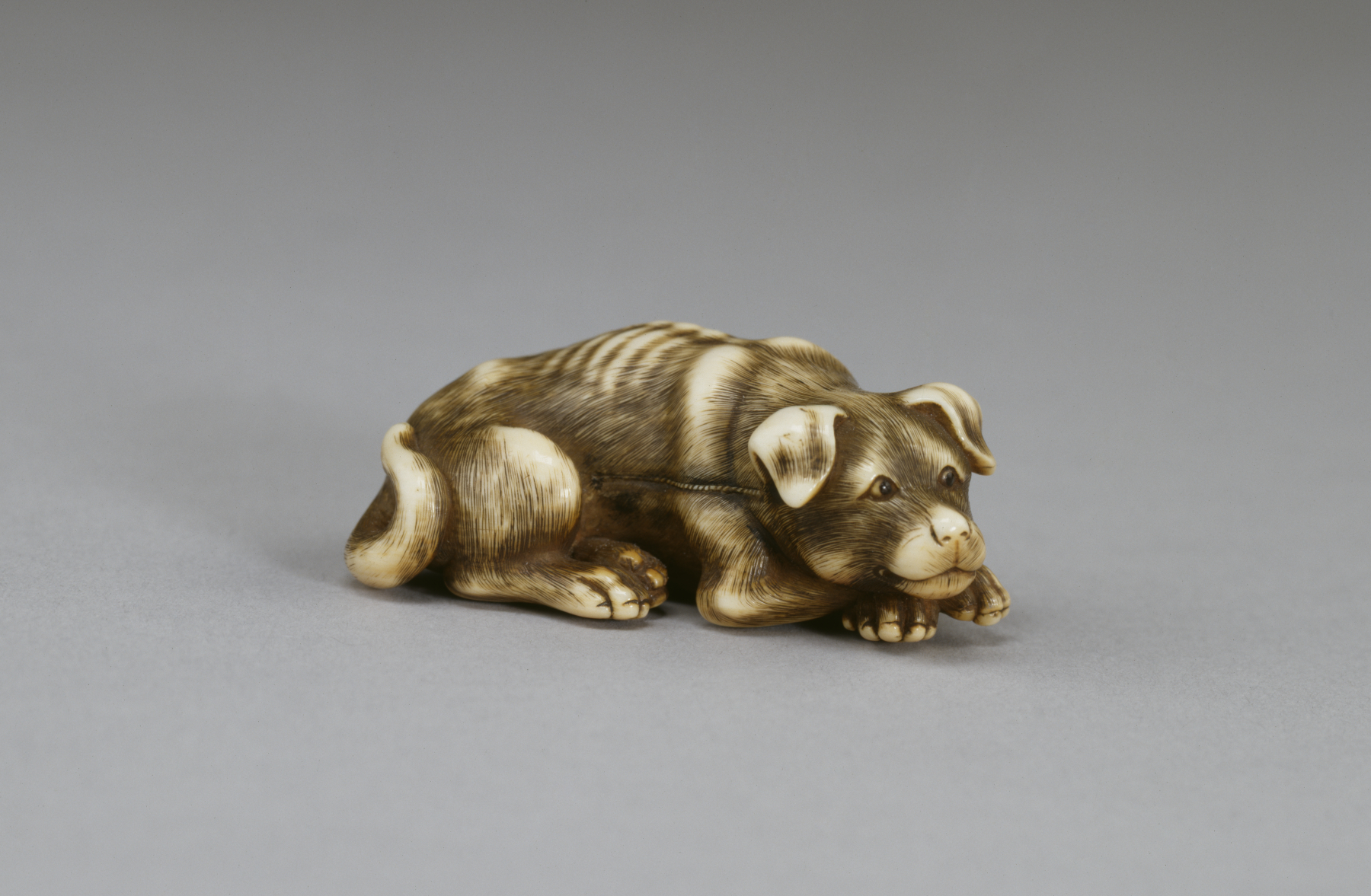Netsuke in the Form of a Dog
(Japan and Korea )
Although Chinese folklore disparaged dogs, in Japan they came to be regarded positively as dispellers of evil and portenders of easy childbirth. They symbolize the eleventh year in the Chinese and Japanese 12-year cycle. In this example, the crouching animal wears a rope leash. Tomotada, a gifted animal carver, was particularly noted for carvings of oxen with rope halters. He attracted many pupils, who were permitted to sign their own work as his.
Inscription
Provenance
Provenance (from the French provenir, 'to come from/forth') is the chronology of the ownership, custody, or location of a historical object. Learn more about provenance at the Walters.
William T. Walters, Baltimore [date and mode of acquisition unknown]; Henry Walters, Baltimore, 1894, by inheritance; Walters Art Museum, 1931, by bequest.
Exhibitions
| 2019-2021 | Excursions through the Collection: Portraiture, Adornment, and the Natural World. |
| 2003-2004 | The Fabergé Menagerie. The Walters Art Museum, Baltimore; Columbus Museum of Art, Columbus; Portland Art Museum, Portland. |
| 1978 | Netsuke: Miniature Sculpture of Japan. The Walters Art Gallery, Baltimore. |
Geographies
Japan, Kyoto (Place of Origin)
Measurements
H: 13/16 × W: 2 3/16 × D: 1 3/16 in. (2 × 5.5 × 3 cm)
Credit Line
Acquired by William T. Walters
Location in Museum
Not on view
Accession Number
In libraries, galleries, museums, and archives, an accession number is a unique identifier assigned to each object in the collection.
In libraries, galleries, museums, and archives, an accession number is a unique identifier assigned to each object in the collection.
71.1020


